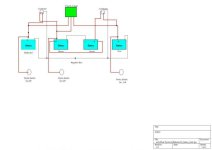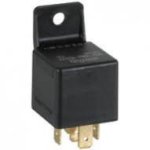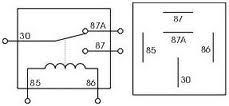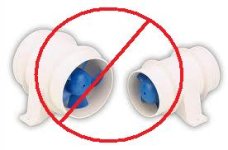bulletine
Regular Contributor
Not sure where to begin with this problem. I have two blowers, when they are on the voltage meter reads low (forgot the volts) but it is low. My instrument lights in the dash panel are low too, making it difficult to read them at night. This problem has been going on for a while and I figure it is time to solve it now. I seldom turn the blowers off because cruising down the intercoastal it is a "no wake" zone (Manatee season).
All four batteries are less than a year old (grp 27's) a 50 amp 3 bank charger (less than 18 months old) with two Yandina combiners. No problems here. I rewired the DC panel to the new house bank of two batteries a few months ago. So no all appliances and interior lights run through the house bank, in addition to radio and other electronics. Windless is also wired to the house bank and is seldom used. All battery wiring is new. I added a fifth battery and placed it in the stern next to the generator and is a standalone, not wired to anything except the generator via on-off switch. This generator wiring is not shown on my diagram.
The wiring changes were reviewed by Yandina and they say it is OK. A brief diagram is attached which only shows the battery setup.
Each engine has it's own battery, the cockpit panel is wired to the starboard battery as near as I can tell. This is where I believe the voltage drop is and before starting I thought to get some advice since I am very weak on electronically troubleshooting. The cockpit panel manages the nav lights and other lighting for the exterior, horn, blowers, actuators, etc. If the blowers are on, the horn does not get enough voltage to work, then I have to turn the blowers off and the horn works.
I was going to begin at the blowers and start tracing the wires. Instead of running around in circles, thought I would seek some advice.
Thanks to all.
All four batteries are less than a year old (grp 27's) a 50 amp 3 bank charger (less than 18 months old) with two Yandina combiners. No problems here. I rewired the DC panel to the new house bank of two batteries a few months ago. So no all appliances and interior lights run through the house bank, in addition to radio and other electronics. Windless is also wired to the house bank and is seldom used. All battery wiring is new. I added a fifth battery and placed it in the stern next to the generator and is a standalone, not wired to anything except the generator via on-off switch. This generator wiring is not shown on my diagram.
The wiring changes were reviewed by Yandina and they say it is OK. A brief diagram is attached which only shows the battery setup.
Each engine has it's own battery, the cockpit panel is wired to the starboard battery as near as I can tell. This is where I believe the voltage drop is and before starting I thought to get some advice since I am very weak on electronically troubleshooting. The cockpit panel manages the nav lights and other lighting for the exterior, horn, blowers, actuators, etc. If the blowers are on, the horn does not get enough voltage to work, then I have to turn the blowers off and the horn works.
I was going to begin at the blowers and start tracing the wires. Instead of running around in circles, thought I would seek some advice.
Thanks to all.





